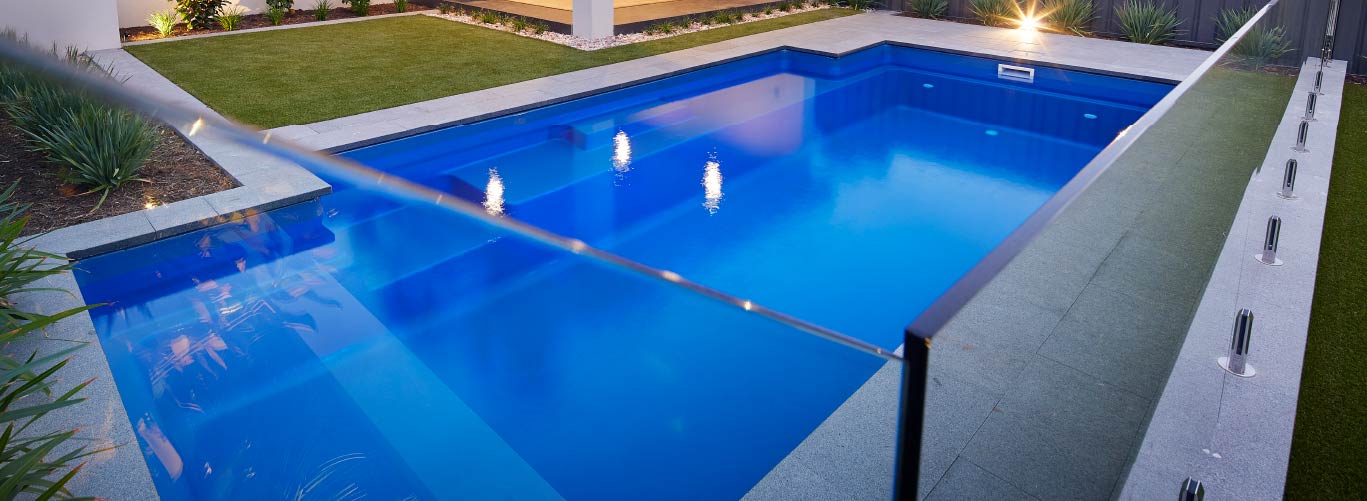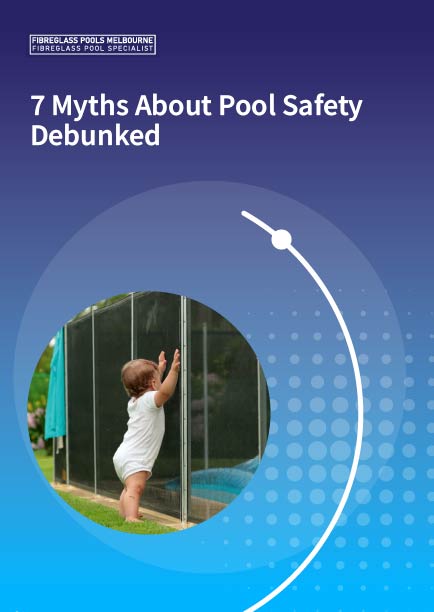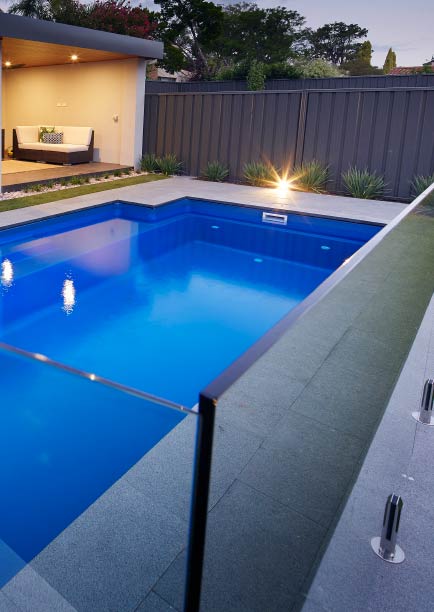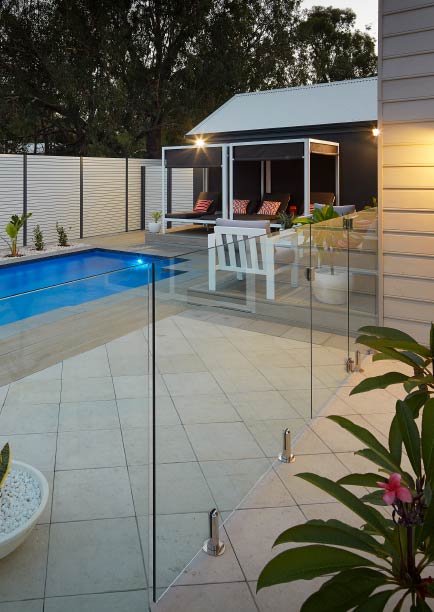7 Myths About Pool Safety Debunked
Swimming pools are a quintessential feature of summertime fun and relaxation, but they come with responsibilities that are sometimes shrouded in myths and misconceptions. For pool owners and parents, ensuring water safety is paramount to prevent accidents and ensure that family and friends can enjoy the pool without unfortunate incidents. In this blog post, we will address seven common myths about pool safety, using data and expert advice to shed light on the truths behind each myth. From the efficacy of pool fences to misconceptions about drowning, it's time to get informed and take action.

Myth 1: "I Don't Need to Fence My Pool If I'm a Responsible Adult."
Many believe that vigilance alone is enough to guarantee safety, but the statistics tell a different story. Accidental drownings can occur quickly and silently, often without any sign of distress. A physical barrier, such as a fence with a self-closing gate, adds an essential layer of protection that can prevent tragic incidents, even in moments when attention might falter.
Myth 2: "Drowning Only Happens When You're Not Paying Attention."
While lack of supervision is a significant risk factor, drownings have occurred even in the presence of adults. Distractions are common at social gatherings or when multitasking. Continuous supervision and implementing a “water watcher” system – where one adult is always watching the swimmers without distractions – is a more reliable preventative measure.
Myth 3: "My Child Is a Good Swimmer, So They're Safe."
While strong swimming skills certainly reduce the risk of drowning, they do not eliminate it entirely. Fatigue, cramps, or unexpected circumstances such as strong currents or sudden weather changes can still put even adept swimmers at risk. It’s important to remember that water safety encompasses more than just being able to swim well. Factors like supervision, swimming in designated safe areas, and knowing emergency procedures are crucial components of comprehensive water safety. Thus, relying solely on a child’s swimming ability can be dangerously misleading, as the aquatic environment can be unpredictable and unforgiving.

Myth 4: "I Can Hear If Someone Is Drowning in My Pool."
Contrary to popular belief, drowning is often silent. People who are drowning do not usually splash, wave, or call for help because their body’s instinctive response is focused on trying to breathe. Their arms may be outstretched to the sides, pushing downwards in an attempt to keep their head above water, and their mouth may be at or below the water’s surface, making it difficult to call out. By the time you notice someone is in trouble, it may already be too late. This is why it’s crucial to always keep a close watch on swimmers, especially children and inexperienced swimmers, and to recognise the subtle signs of distress.
Myth 5: "Floaties and Inflatable Toys Are Enough to Keep Kids Safe."
Inflatable toys and floaties can provide a false sense of security. They are not substitutes for proper life jackets and can flip or deflate, which could lead to a dangerous situation. Additionally, they should never replace active adult supervision.
Myth 6: "Pool Covers Are a Foolproof Safety Measure."
Pool covers can reduce the risk of a child entering the water unnoticed, but they are not infallible. Some covers may not support the weight of a child or pet, and partial covers can lure children onto them, leading to potential entrapment or suffocation. Proper fencing and gates are still recommended as primary precautions.
Myth 7: "Drowning Is the Only Pool Hazard to Be Concerned About."
While drowning is certainly the most serious concern, it’s not the only hazard pools present. Slippery decking can lead to dangerous falls and injuries, chemical imbalances in the water can cause skin irritations or respiratory issues, and prolonged sun exposure can result in sunburn or heatstroke. All these safety concerns require careful attention and preventive measures for a truly comprehensive approach to pool safety. Regular maintenance, appropriate signage, and proper supervision can help mitigate these risks and ensure a safe and enjoyable swimming experience.

Implementing Effective Pool Safety Measures
Understanding the myths is the first step, but taking proactive safety measures will make all the difference. Every pool area should be equipped with secure fencing and a self-closing gate that complies with local safety regulations, ensuring that children and pets cannot enter unsupervised. Adult supervision, without distractions such as mobile phones or books, is non-negotiable to ensure constant vigilance.
Enrolling children in high-quality swimming lessons can help them develop their skills and build confidence in the water, but they should always be monitored closely, regardless of their swimming ability. Investing in proper life vests and installing pool alarms to alert you if someone has entered the pool area can also significantly enhance safety. These alarms come in various forms, including surface wave sensors and wearable devices that can notify you immediately of any unauthorised access.
Additionally, adults—especially pool owners and parents—should be knowledgeable in first aid and CPR. These skills can be life-saving in the event of an accident, allowing for immediate response before professional medical help arrives. Regularly refreshing these skills through certified courses can ensure you are always prepared.
Furthermore, keeping the pool area free of clutter and ensuring all toys and flotation devices are removed from the water when not in use can prevent accidents and reduce the temptation for children to enter the pool area unsupervised. Regular maintenance and checks of all safety equipment can also ensure everything is in proper working order, providing peace of mind and a safe environment for everyone.
Conclusion
Dispelling these myths is vital in fostering a safety-conscious culture around home swimming pools. It’s incumbent upon pool owners and parents to prioritise safety measures and ensure that their relaxation space doesn’t become the setting for tragedy. This includes installing proper barriers, maintaining clear visibility of the pool area, and educating all family members about water safety rules. Take a moment to reflect on your own practices, make the necessary adjustments, and continue to enjoy the many pleasures of having a pool with peace of mind. Regularly check for potential hazards, keep emergency equipment on hand, and consider enrolling in a CPR course. Remember, vigilance, education, and preparation are the pillars of pool safety. By taking these steps, you can create a safe and enjoyable environment for everyone.
7 Myths About Pool Safety Debunked
Swimming pools are a quintessential feature of summertime fun and relaxation, but they come with responsibilities that are sometimes shrouded in myths and misconceptions. For pool owners and parents, ensuring water safety is paramount to prevent accidents and ensure that family and friends can enjoy the pool without unfortunate incidents. In this blog post, we will address seven common myths about pool safety, using data and expert advice to shed light on the truths behind each myth. From the efficacy of pool fences to misconceptions about drowning, it's time to get informed and take action.

Myth 1: "I Don't Need to Fence My Pool If I'm a Responsible Adult."
Many believe that vigilance alone is enough to guarantee safety, but the statistics tell a different story. Accidental drownings can occur quickly and silently, often without any sign of distress. A physical barrier, such as a fence with a self-closing gate, adds an essential layer of protection that can prevent tragic incidents, even in moments when attention might falter.
Myth 2: "Drowning Only Happens When You're Not Paying Attention."
While lack of supervision is a significant risk factor, drownings have occurred even in the presence of adults. Distractions are common at social gatherings or when multitasking. Continuous supervision and implementing a “water watcher” system – where one adult is always watching the swimmers without distractions – is a more reliable preventative measure.
Myth 3: "My Child Is a Good Swimmer, So They're Safe."
While strong swimming skills certainly reduce the risk of drowning, they do not eliminate it entirely. Fatigue, cramps, or unexpected circumstances such as strong currents or sudden weather changes can still put even adept swimmers at risk. It’s important to remember that water safety encompasses more than just being able to swim well. Factors like supervision, swimming in designated safe areas, and knowing emergency procedures are crucial components of comprehensive water safety. Thus, relying solely on a child’s swimming ability can be dangerously misleading, as the aquatic environment can be unpredictable and unforgiving.

Myth 4: "I Can Hear If Someone Is Drowning in My Pool."
Contrary to popular belief, drowning is often silent. People who are drowning do not usually splash, wave, or call for help because their body’s instinctive response is focused on trying to breathe. Their arms may be outstretched to the sides, pushing downwards in an attempt to keep their head above water, and their mouth may be at or below the water’s surface, making it difficult to call out. By the time you notice someone is in trouble, it may already be too late. This is why it’s crucial to always keep a close watch on swimmers, especially children and inexperienced swimmers, and to recognise the subtle signs of distress.
Myth 5: "Floaties and Inflatable Toys Are Enough to Keep Kids Safe."
Inflatable toys and floaties can provide a false sense of security. They are not substitutes for proper life jackets and can flip or deflate, which could lead to a dangerous situation. Additionally, they should never replace active adult supervision.
Myth 6: "Pool Covers Are a Foolproof Safety Measure."
Pool covers can reduce the risk of a child entering the water unnoticed, but they are not infallible. Some covers may not support the weight of a child or pet, and partial covers can lure children onto them, leading to potential entrapment or suffocation. Proper fencing and gates are still recommended as primary precautions.
Myth 7: "Drowning Is the Only Pool Hazard to Be Concerned About."
While drowning is certainly the most serious concern, it’s not the only hazard pools present. Slippery decking can lead to dangerous falls and injuries, chemical imbalances in the water can cause skin irritations or respiratory issues, and prolonged sun exposure can result in sunburn or heatstroke. All these safety concerns require careful attention and preventive measures for a truly comprehensive approach to pool safety. Regular maintenance, appropriate signage, and proper supervision can help mitigate these risks and ensure a safe and enjoyable swimming experience.

Implementing Effective Pool Safety Measures
Understanding the myths is the first step, but taking proactive safety measures will make all the difference. Every pool area should be equipped with secure fencing and a self-closing gate that complies with local safety regulations, ensuring that children and pets cannot enter unsupervised. Adult supervision, without distractions such as mobile phones or books, is non-negotiable to ensure constant vigilance.
Enrolling children in high-quality swimming lessons can help them develop their skills and build confidence in the water, but they should always be monitored closely, regardless of their swimming ability. Investing in proper life vests and installing pool alarms to alert you if someone has entered the pool area can also significantly enhance safety. These alarms come in various forms, including surface wave sensors and wearable devices that can notify you immediately of any unauthorised access.
Additionally, adults—especially pool owners and parents—should be knowledgeable in first aid and CPR. These skills can be life-saving in the event of an accident, allowing for immediate response before professional medical help arrives. Regularly refreshing these skills through certified courses can ensure you are always prepared.
Furthermore, keeping the pool area free of clutter and ensuring all toys and flotation devices are removed from the water when not in use can prevent accidents and reduce the temptation for children to enter the pool area unsupervised. Regular maintenance and checks of all safety equipment can also ensure everything is in proper working order, providing peace of mind and a safe environment for everyone.
Conclusion
Dispelling these myths is vital in fostering a safety-conscious culture around home swimming pools. It’s incumbent upon pool owners and parents to prioritise safety measures and ensure that their relaxation space doesn’t become the setting for tragedy. This includes installing proper barriers, maintaining clear visibility of the pool area, and educating all family members about water safety rules. Take a moment to reflect on your own practices, make the necessary adjustments, and continue to enjoy the many pleasures of having a pool with peace of mind. Regularly check for potential hazards, keep emergency equipment on hand, and consider enrolling in a CPR course. Remember, vigilance, education, and preparation are the pillars of pool safety. By taking these steps, you can create a safe and enjoyable environment for everyone.


